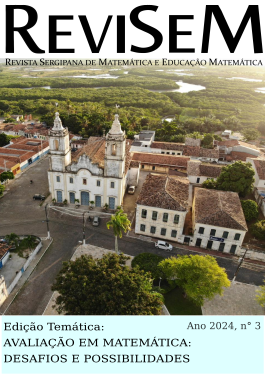CLASS PLANS AND MATH EDUCATION: WHAT DID THE COVID-19 PANDEMIC TEACH US?
DOI:
https://doi.org/10.34179/revisem.v9i3.20395Resumo
In recent years, Math Education has gained prominence in the production of scientific knowledge and its continual updating within the educational process. Investigating the methods, procedures, and techniques used by pedagogue teachers in the early years to teach Mathematics contributes to constructing a theoretical-methodological framework. This framework aids in understanding the intrinsic aspects of each teaching group or network and formulating new proposals for developing educational devices that enhance the quality of learning and teaching processes. This article presents a case study involving five pedagogue teachers from different municipal education networks in the State of São Paulo. The study focuses on their understanding of planning and evaluation during and after the pandemic, as evidenced by lesson plans produced in a continuing education course in 2020. The analysis methodology used was discourse analysis from the French perspective, which allowed for the investigation of the ideological bases of discursive formations on the conceptions, as expressed by the teachers in their written discourses. The study revealed: (i) categorical enunciation of evaluative forms during the pandemic, (ii) the use of constructivist teaching perspectives as an ideological basis for teaching, and (iii) a lack of procedural description of methodological and evaluative devices for the planned teaching process.
Keywords: Pedagogue, Elementary education, Lesson plans, Math education, Pandemic.
Downloads
Downloads
Publicado
Como Citar
Edição
Seção
Licença
Copyright (c) 2024 DOUGLAS MANOEL ANTONIO DE ABREU PESTANA DOS SANTOS

Este trabalho está licenciado sob uma licença Creative Commons Attribution-NonCommercial 4.0 International License.
Licença Creative Commons
| Permite remixagem, adaptação e nova criação a partir da obra para fins não comerciais, e que seja atribuído o crédito ao autor (CC BY-NC) |
